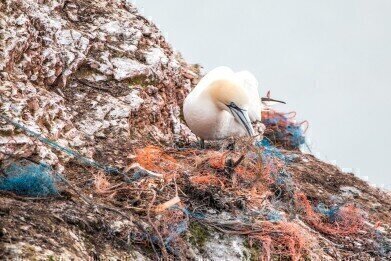Water/Wastewater
Scientists Find Highest Microplastic Levels on Mediterranean Seafloor
May 10 2020
A scientific study carried out by researchers from the University of Manchester has discovered the highest ever recorded levels of plastic on the seafloor. The plastic pollution was located at the bottom of the Mediterranean Sea in the Tyrrhenian basin between Italy and the island of Corsica and Sardinia, with samples revealing there to be almost two million fragments of plastic per square metre.
The news is a stark reminder that the amount of plastic pollution visible to the human eye on our coastlines and beaches represents just a fraction of that which has contaminated the world’s rivers, seas and oceans. The vast majority of plastic waste is composed of microscopic fragments known as microplastics, which can sink to the bottom of the sea, become ingested by marine organisms or be tossed to and fro by the ocean’s currents and end up in concentrated deposits.
Microplastics, macro problems
The study’s authors believe that the microplastics - the dangers of which are not yet fully understood by the scientific community – can be manipulated by strong currents at the bottom of the sea, thus leading to high concentrations of them in certain areas. For reference, microplastics is the name given to those plastic particles with a diameter of less than 1mm.
“These currents build what are called drift deposits; think of underwater sand dunes," explained Dr Ian Kane, lead author on the paper. “They can be tens of kilometres long and hundreds of metres high. They are among the largest sediment accumulations on Earth. They're made predominantly of very fine silt, so it's intuitive to expect microplastics will be found within them.”
Just how many microplastics the research team found may have been cause for surprise and almost certainly for concern, however. After pulling sediment samples from off the coast of Italy, the team counted as many as 1.9 million pieces of plastic for every square metre. That’s a huge amount of plastic, and one that’s largely unseen.
A mounting problem
The visible debris which washes up on our beaches and shorelines often draws the attention of the mainstream media to the problem of plastic pollution, but it’s thought to represent a mere drop in the ocean. In fact, scientists believe that 1% of the overall amount of plastic in our seas and oceans is visible, with the whereabouts of the remaining 99% not fully known.
What’s more, the University of Manchester study was fairly typical in its methods and its environment, meaning that similar deposits of plastic are incredibly likely to have occurred elsewhere in the world, too. There is a very real possibility that they are being swept into biodiversity hubs, thus threatening the survival of animals living there.
While there have been some ingenious solutions geared towards clearing up plastic pollution – such as the unlikely combination of artificial intelligence and forensic science – the best course of action would be to prevent the plastic from entering our waterways in the first place.
Digital Edition
IET 34.2 March 2024
April 2024
Gas Detection - Biogas batch fermentation system for laboratory use with automatic gas analysis in real time Water/Wastewater - Upcycling sensors for sustainable nature management - Prist...
View all digital editions
Events
Apr 30 2024 Melbourne, Australia
Apr 30 2024 Birmingham, UK
May 03 2024 Seoul, South Korea
May 05 2024 Seville, Spain
May 06 2024 Minneapolis, MN, USA


















